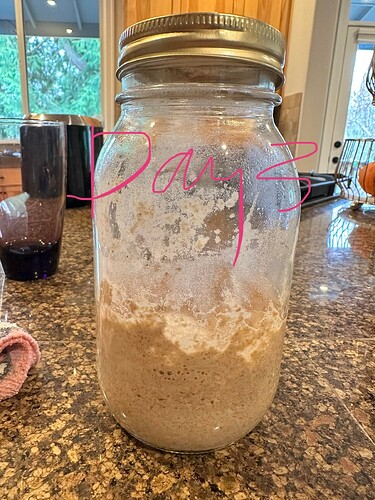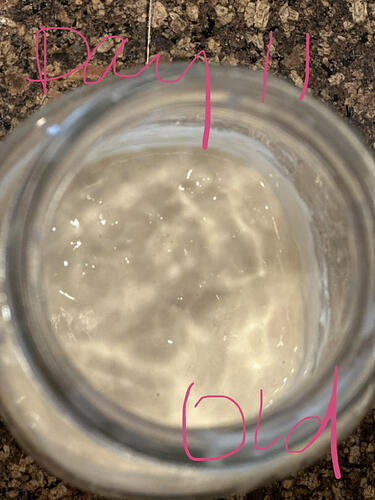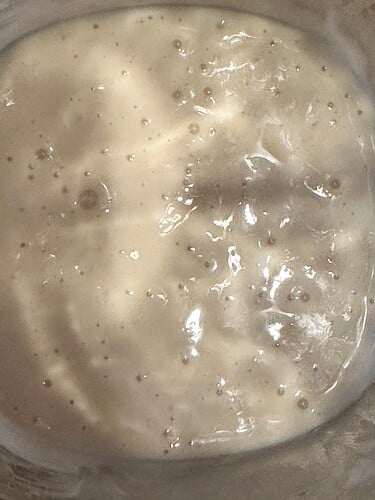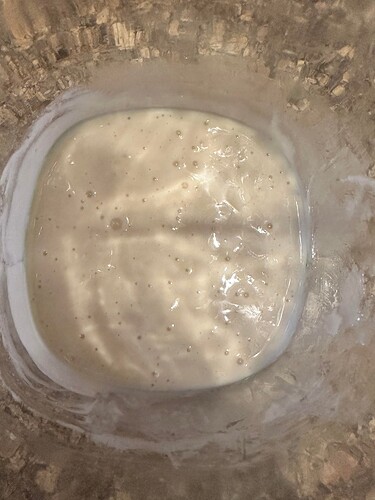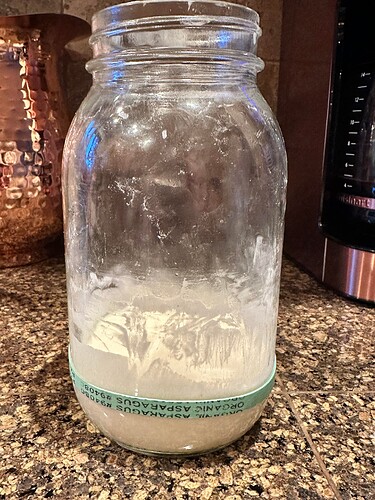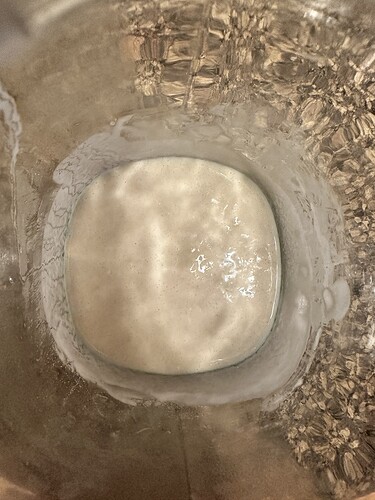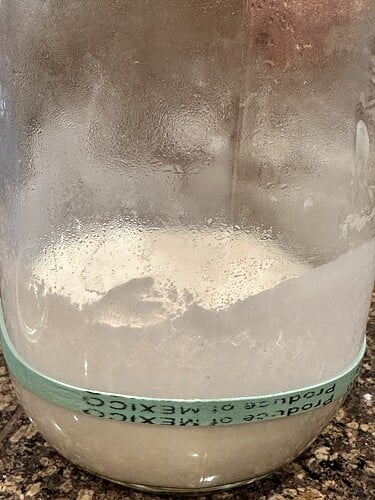Hello, I have been reading through all of the forum posts here and am hoping you can help me too! I created my first starter 11 days ago and she has never matured - I’ll include a few photos but basically, she will bubble but not rise. Until I found your site, I was following another website’s guidance, building up a sizable starter by feeding it initially 60g wheat flour and 60g water, and then discarding half each day through day 7 and feeding it 60g AP flour and 60g water (so by day 7, I kept 116.25g starter and added to that 60g flour, 60g water). I knew at that point something felt off because my starter seemed very runny.
Once I moved on from this person’s guidance, I decided to reduce down to I believe 75g starter and do a 1:1:1 feed, still with AP flour. I use water from my fridge but do live in Oregon and understand our tap water is chlorinated.
The other thing is that I have kept my starter in the oven with the light on and door shut for 1-2 hours each day but turned off in-between. I’ve wondered if this created a temperature swing that negatively impacted my starter? My house is consistently about 68-72 degrees right now.
So issue #1 is that I am on day 11 and have never seen a rise. My starter will bubble on top, but never doubled and never had foamy, thick bubbly texture I see in photos of mature starters.
Two days ago, on day #9, I followed the guidance I saw here and skipped a feed (am only feeding every 24 hours), and that did produce a little more activity but not anything significant. Yesterday, on day #10, I decided to follow your guidance to keep only 50g starter and add to that 50g water and 60g AP flour. In the meantime, I kept my remaining starter in the original jar and added to that 50g water and 60g AP flour. I have no idea how much starter was in there, but it was a lot by this point. I also left my oven light on for 24 hours but with the door ajar (instead of the above).
This morning, day #11, my new starter (the 50g mentioned above) is showing some bubbling but nothing noteworthy and definitely did not rise in 24 hours. But interestingly, the original starter (original jar mentioned above) had the most activity I’ve seen to date! It did not double and it does not look like a mature starter, but definitely there was some progress! (note: I unfortunately did not take a photo) - also, it distinctly smelled like nail polish remover today.
I decided to conduct an experiment and feed the new starter: 50g starter, 25g whole wheat flour (instead of AP), and 25g water. I saw this 1:5:5 ratio mentioned on your site, so we will see what happens. Now that I have 2 starters, I figure I have nothing to lose?
I fed the original starter 54g starter/water/AP flour. So, back to 1:1:1.
I will post a few photos, but they all look pretty underwhelming day to day. (Also have switched the starters back and forth between two jars, so don’t want to confuse.) I will report back tomorrow as well as reply here. The commentary I’ve read here has been so helpful, I am hoping you see this and have any thoughts or guidance! Thanks!
The day #11 photos of the old and new starter are just after feeding this morning, FYI.
